Where can you find nature in the concrete jungle? The five boroughs offer lots of park space for the urbanite looking for a patch of grass. But if you're looking for roses, lilies, tropical plants and immaculately manicured lawns, then you'll want to visit one of the city's botanical gardens. Located in the Bronx, Brooklyn, Queens and Staten Island, these venerable institutions preserve and display both local and rare plant and flower life and offer quiet oases for anyone who needs a break from asphalt and steel. And best of all, they can be reached by public transit. Here's our guide to the gardens, including what to see and how to get there.
THE NEW YORK BOTANICAL GARDEN
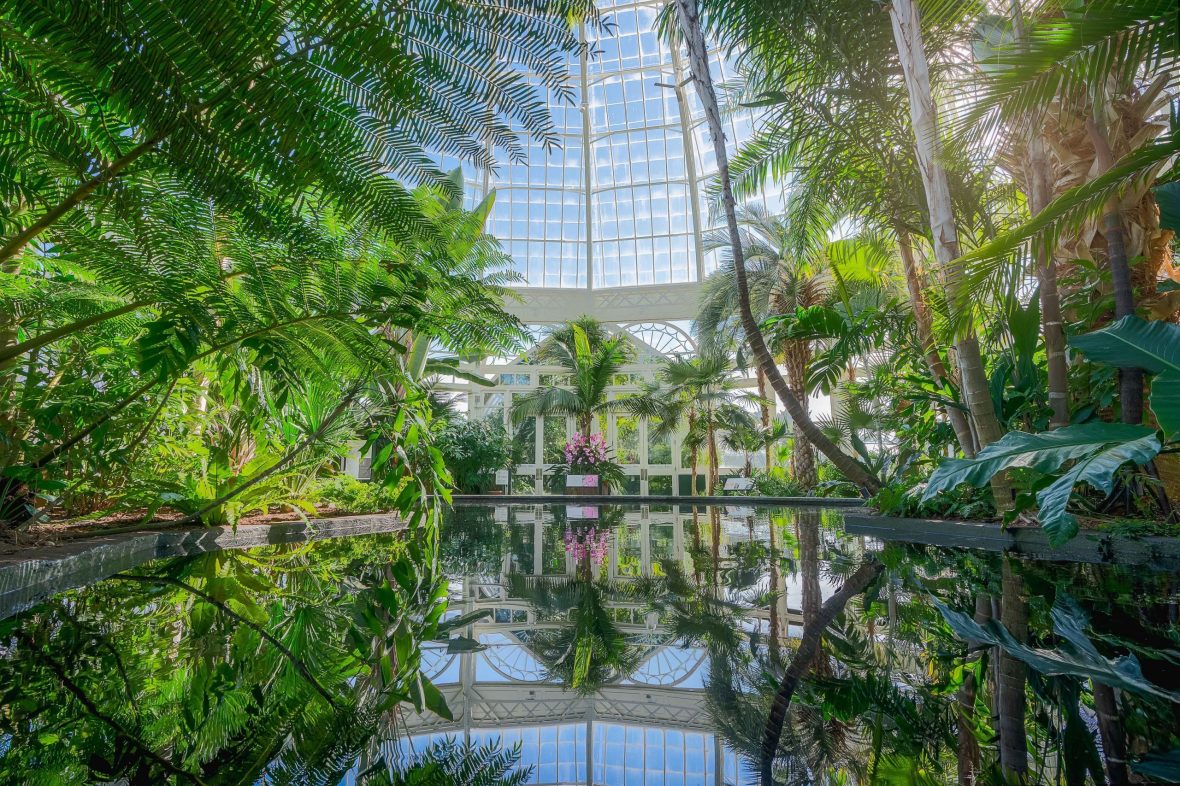
HISTORY
Founded in 1891 and located in Bronx Park, the New York Botanical Garden is the largest in the city, consisting of 250 acres and over one million plants. Its construction was championed and led by the Torrey Botanical Society, which sought to emulate in the United States the kinds of botanical gardens that were then popular in England and continental Europe. The NYBG sits on land that used to belong to the Lorillard family, which once owned and ran a tobacco mill on the property. The site was chosen and first landscaped in part by Calvert Vaux, one of the architects of Central Park; by 1902, both the Mertz Library and the Haupt Conservatory had both been opened to the public.
WHAT’S THERE?
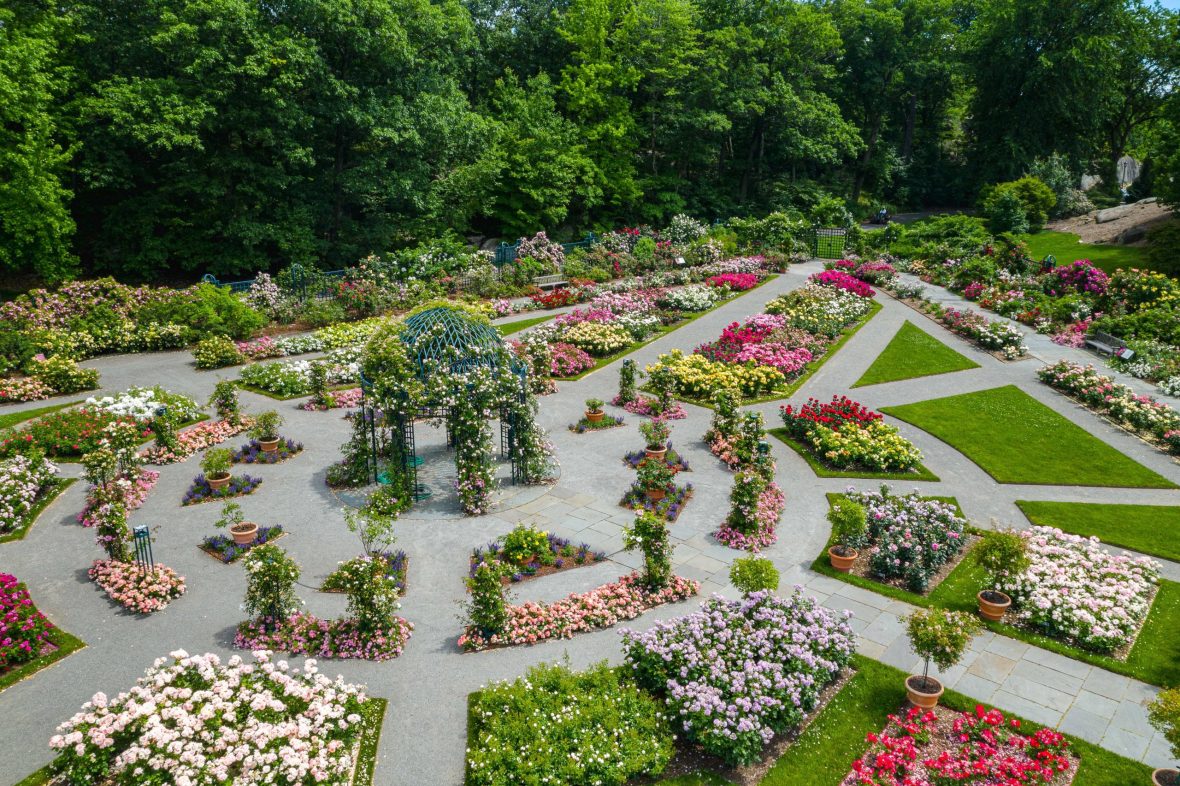
There are 50 gardens at the NYBG, along with a section of old-growth forest, the Thain Family Forest, with trees native to New York that are over 200 years old. Visitors can also see and sit by the Bronx River, which flows through the forest, and the former Lorillard Family Snuff Mill, which dates back to 1840.
In the Haupt Conservatory, named for publisher and philanthropist Enid A. Haupt, you can find tropical flowers and plants, plus rainforest and desert plants. The Italian Renaissance-style steel-and-glass dome stands 90 feet tall, with the entire structure dating back to 1902. The Peggy Rockefeller Rose Garden dates back to 1916 and features more than 4,000 individual rose plants comprising 37 different species. There are also perennial gardens, an herb garden, a conifer arboretum with trees dating back to the early 20th century, and a rock garden. And once every four or five years, visitors are treated to a blooming of Amorphophallus titanum, otherwise known as the titan-arum, or the corpse flower, so named because when it blooms, it gives off an odor of rotting meat.
WHEN TO GO
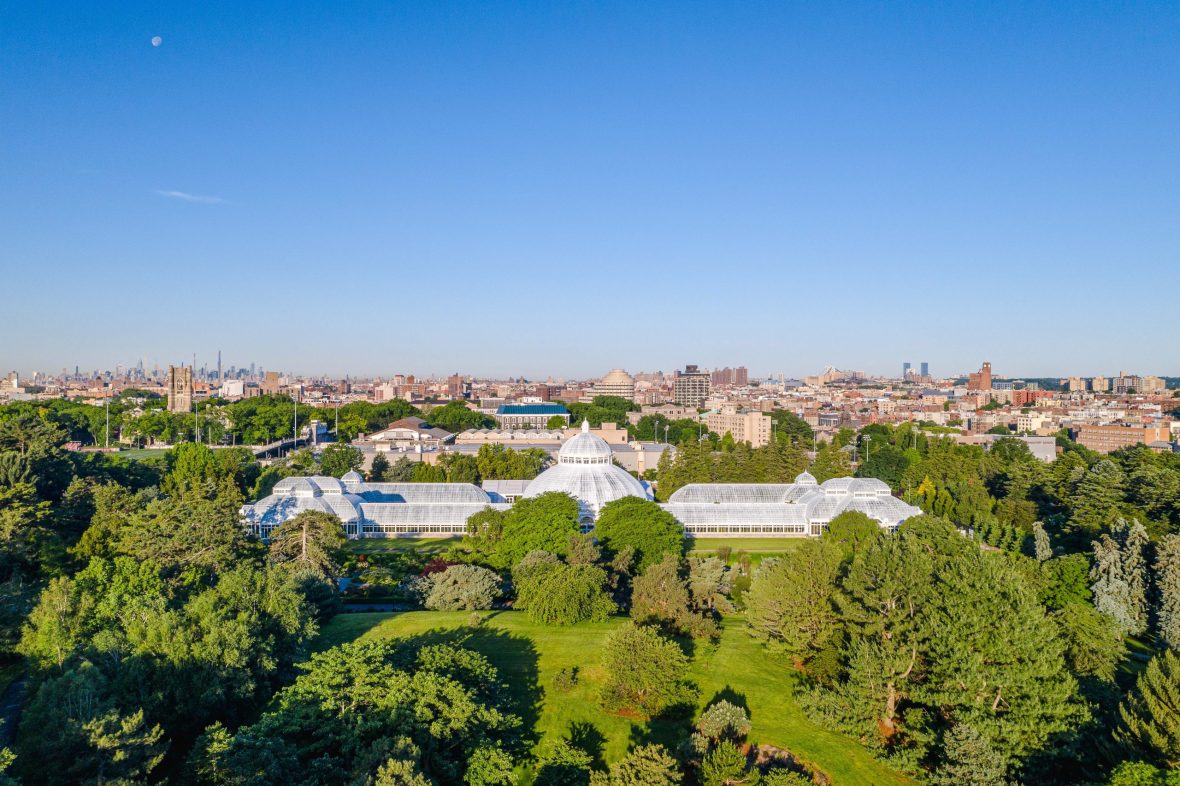
The NYBG is open year-round, Tuesday to Sunday, from 10 am to 6 pm. Admission is $35 for adults, $31 for students and seniors, $15 for children between ages 2-12, and free for children under 2, as well as members. Cherry blossoms begin to bloom in the spring, and the roses begin to bloom in May. Fall brings the changing colors of the leaves. In the winter, the NYBG hosts its annual Holiday Train Show, one of the most popular holiday attractions in the city; on display from November into January, the exhibit features dozens of model trains running through scale models of famous New York landmarks and the plant life in the Haupt Conservatory. Winter also features NYBG Glow, an outdoor light show on the garden’s grounds.
HOW TO GET THERE
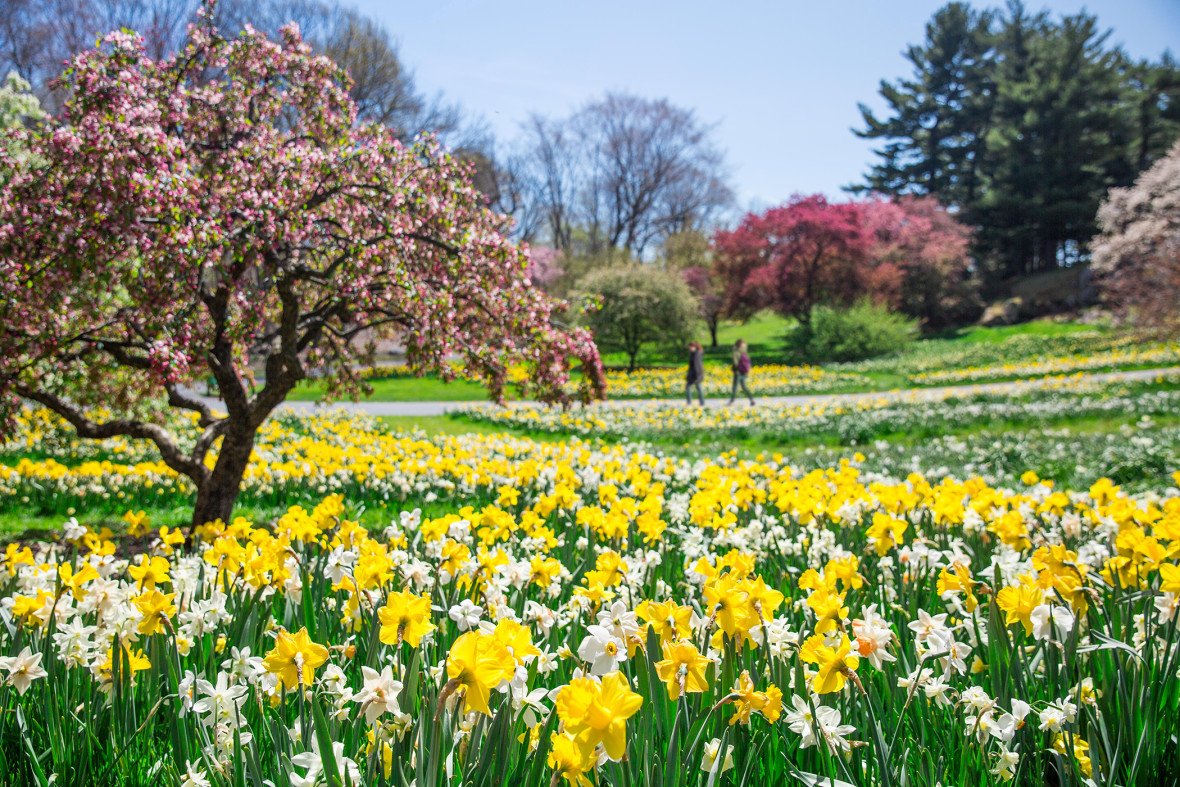
The easiest way to get to the NYBG is by Metro-North via the Harlem line to the Botanical Garden station, which is across the street from the garden's Mosholu Entrance. There are also two subway stations near the NYBG: Bedford Park Blvd (B, D, 4) and Allerton Ave (2). From the Bedford Park Blvd station, you can either take the Bx26 bus to the Mosholu Entrance or walk to the garden, which takes about 20-25 minutes; from the Allerton Ave station, you can walk to the garden’s East Gate entrance, a trip of roughly 10-15 minutes.
Save on your trip and get the MTA Deal to NYBG here
Metro-North
Harlem
Visitors to the NYBG can take the Metro-North Harlem line to the Botanical Garden station or the B, D, 2 or 4 trains to nearby subway stations
BROOKLYN BOTANIC GARDEN
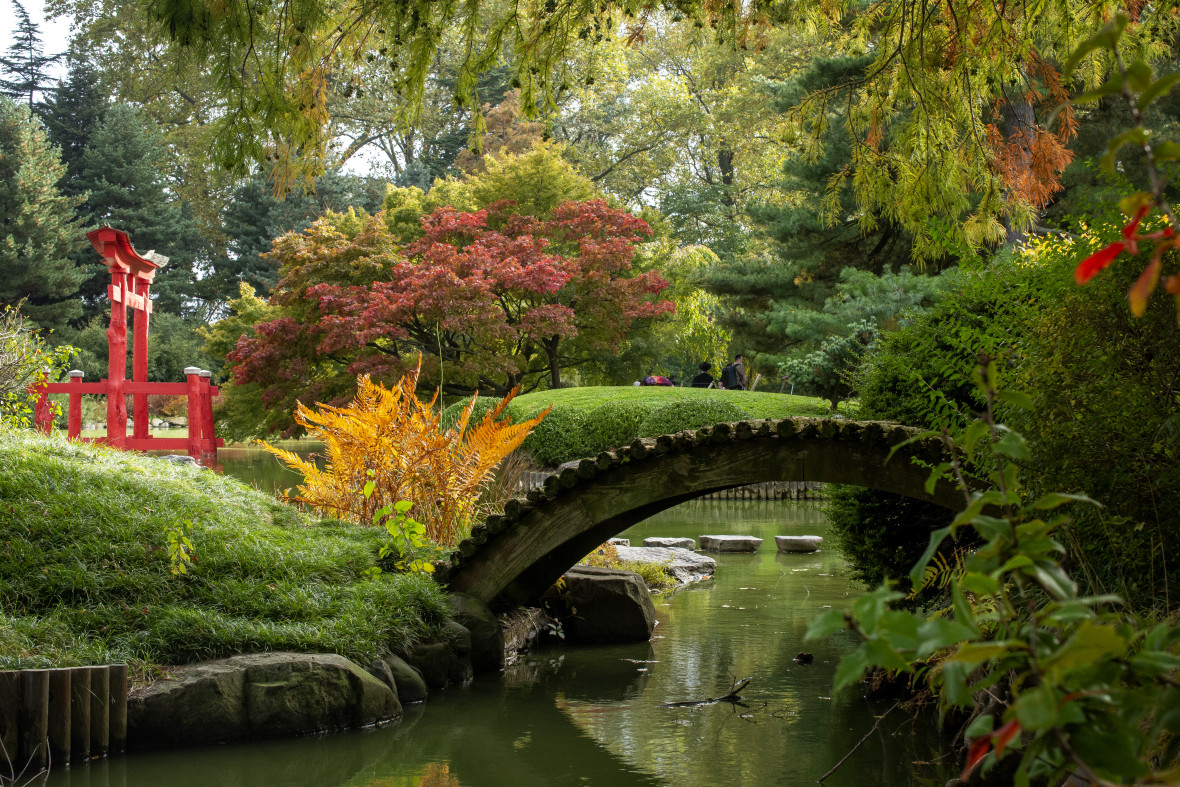
HISTORY
Originally planned to be a part of Prospect Park, the Brooklyn Botanic Garden instead was built on a former ash dump, with the site designated in 1897 and the garden itself opening in 1911. The land was laid out by the Olmsted Brothers, the world-famous firm that designed Central Park, as well as Fort Greene Park, Grand Army Plaza, and Prospect Park. Meanwhile, the renowned architecture firm of McKim, Mead & White — the minds behind the original Pennsylvania Station, the Brooklyn Museum, and the campus of Columbia University — designed the garden’s buildings.
WHAT’S THERE?

The BBG is perhaps most famous for its cherry trees — over 200 in all, the oldest of which date back to 1921. The Cherry Esplanade features 76 of them aligned in two rows along a lawn. The trees bloom every year in mid-spring, usually around late March or early April, with their flowers lasting through mid-May. Not far from the Cherry Esplanade is the Japanese Hill-and-Pond Garden, one of the first Japanese gardens to open in the United States; it was planted in 1915. The three-acre space features three man-made hills, a small pond full of koi fish, a waterfall, wooden bridges, a torii (gateway) and a Shinto shrine.
The Native Flora Garden is the oldest section of the BBG, dating back to its opening, and features local New York plants; it’s also a popular stop for bees, butterflies and migrating birds. The Shakespeare Garden is one of two in New York (the other is in Central Park), filled with flowers and plants that can be found in his works. The Cranford Rose Garden, opened in 1928, has over 1,200 varieties of rose, some of are almost a century old. The Fragrance Garden is specially designed for the vision-impaired, with information signs in braille and plants that can be touched or smelled. And the Steinhardt Conservatory has an immense collection of bonsai, orchids, water plants and desert plants, plus a permanent exhibition on the evolution of plant life and the history of climate change.
WHEN TO GO
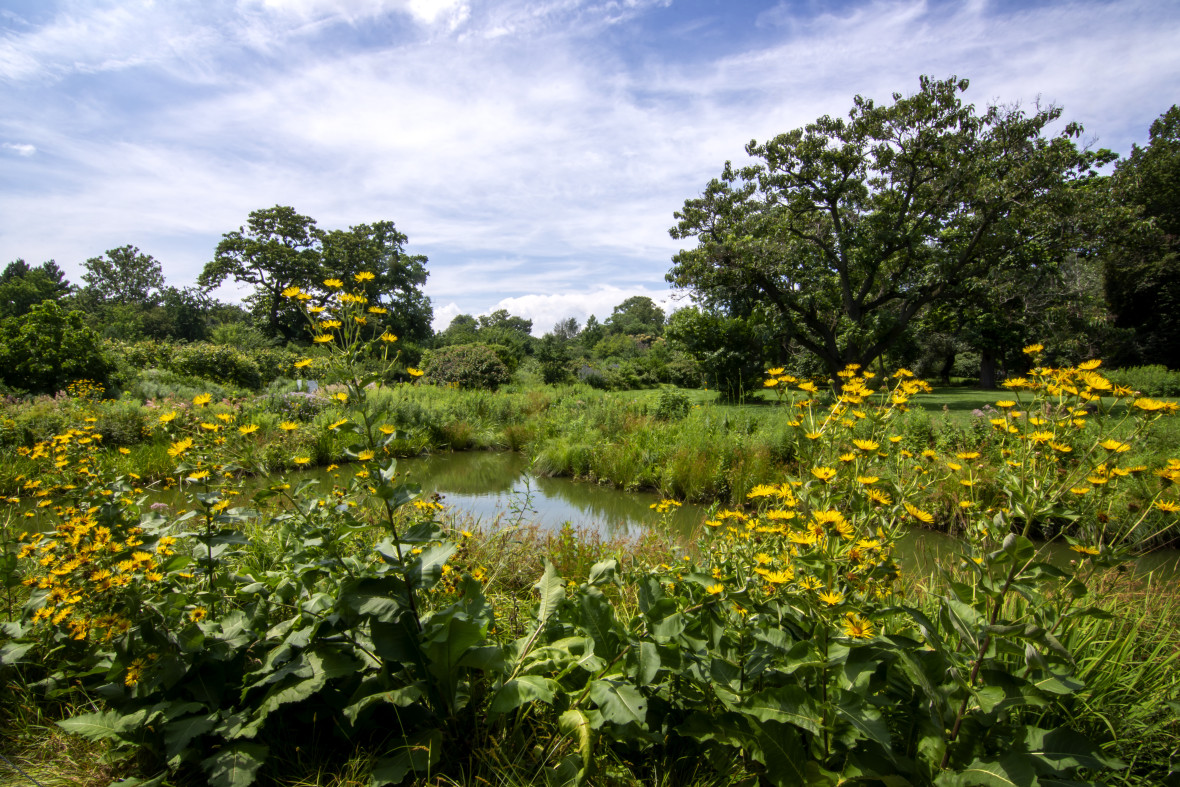
The Brooklyn Botanic Garden is open year-round, Tuesday through Sunday, from 10 am to 6 pm, with special late hours in the summer on Tuesdays and Thursdays. Admission is $22 for adults, $16 for seniors and students, and free for children under 12, as well as members. Early spring is the most popular time to visit, owing to the annual cherry blossom viewing festival. Late spring brings lilac and peony blooms, while summer is the best time to see the roses and lilies and the aquatic plants in the BBG’s pools and fountains. Fall is for admiring the changing foliage in the Native Flora and Japanese gardens, and winter is best spent either inside the conservatory or walking amidst the snowy conifers and evergreens in the Japanese and rock gardens.
HOW TO GET THERE
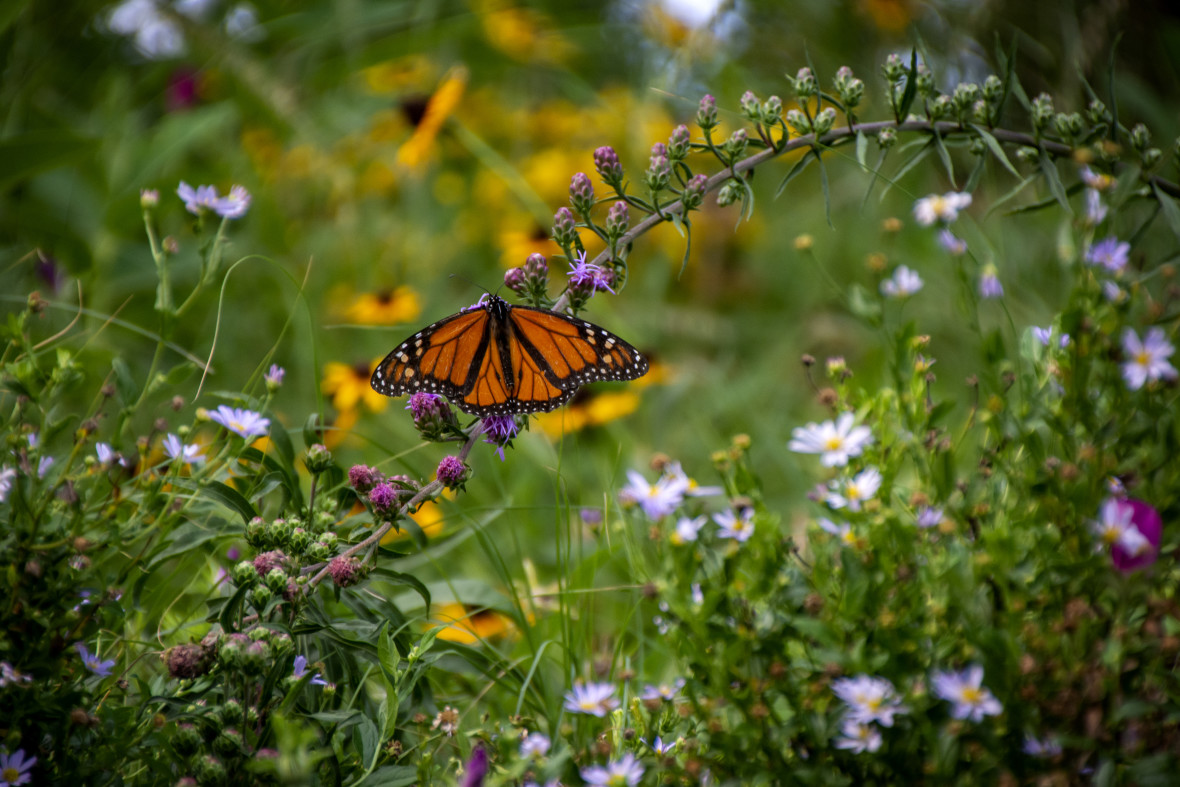
Seven different subway lines will get you to the Brooklyn Botanic Garden: the 2 and 3 at Eastern Parkway-Brooklyn Museum; the B and Q at Prospect Park; and the 4, 5 and S at Franklin Avenue. You can also take any of the following bus lines: the B16, B41, B43, B45, and B48. If you’re coming from Long Island, you can take the LIRR to Atlantic Avenue and transfer there to the 2, 3, 4 or 5 trains.
Subway
There are three different subway stations near the Brooklyn Botanic Garden, accessible by these seven lines
QUEENS BOTANICAL GARDEN

HISTORY
The Queens Botanical Garden grew out of the 1939 World’s Fair held in Flushing Meadows-Corona Park, as a five-acre exhibit titled “Gardens on Parade.” The garden remained there until 1961, when it was moved east of the park to make way for the 1964 World’s Fair. At the garden’s main entrance on Main Street stand two reminders of its origins: a pair of blue atlas cedars that were part of the 1939 World’s Fair exhibit.
WHAT’S THERE

Visitors to the QBG make their entrance through the Main Street gate and walk down the Oak Allee, a path lined by pin oaks. To their left is the Circle Garden, the Cherry Circle, and a Fragrance Walk full of strong-smelling shrubs and perennials; to the right, there are seasonal plants, a small patch of wetlands, and the visitor’s center. Going further into the park, you’ll come upon the Rose Garden and the Bee Garden, the latter of which has pollinator-friendly plants and hives with Italian honeybees. The largest sections of the garden are the arboretum and the meadow; in the arboretum, you’ll find winter hazels, magnolias and honey locusts, while the meadow has perennial wildflowers and grasses that are popular with migrating birds and pollinator insects. Finally, there’s a farm and compost site where visitors can learn about food waste recycling and sustainable agriculture.
WHEN TO GO

The Queens Botanical Garden is open year-round, Tuesday to Sunday, from 8 am to 6 pm between April and October and from 8 am to 4 pm between November and March. Admission is $6 for adults, $4 for seniors and students, $2 for children ages 3-12, and free for children under 3 and members. The garden is also free to all visitors from December 16 through March. The cherry trees and Fragrance Walk are best visited in spring, when the former will be in bloom and the latter will be at its most redolent. The flowers in the various gardens are at their prettiest in late spring, and the roses make their appearance in early summer; summer is also the peak season for the Bee and Herb gardens, as well as colorful lantanas and hibiscus. The pin oaks, wetlands, arboretum and giant sunflowers in the meadow are the highlights from late summer into fall as the leaves change color, with Monarch butterflies appearing in September. And in winter, evergreen plants like witch hazel, American holly and magnolia trees, and eastern red cedar are the stars of the show, as are the Norwegian spruce trees that are synonymous with Christmas.
HOW TO GET THERE

The nearest subway station to the QBG is Flushing-Main Street on the 7 line; from there, you can walk eight blocks south on Main Street to the main entrance, or take either the Q44SBS or Q20A/B bus. You can also get there via LIRR at the Flushing-Main Street station on the Port Washington line.
Subway
Port Washington
Take the 7 or the LIRR to Flushing to visit the Queens Botanical Garden
SNUG HARBOR
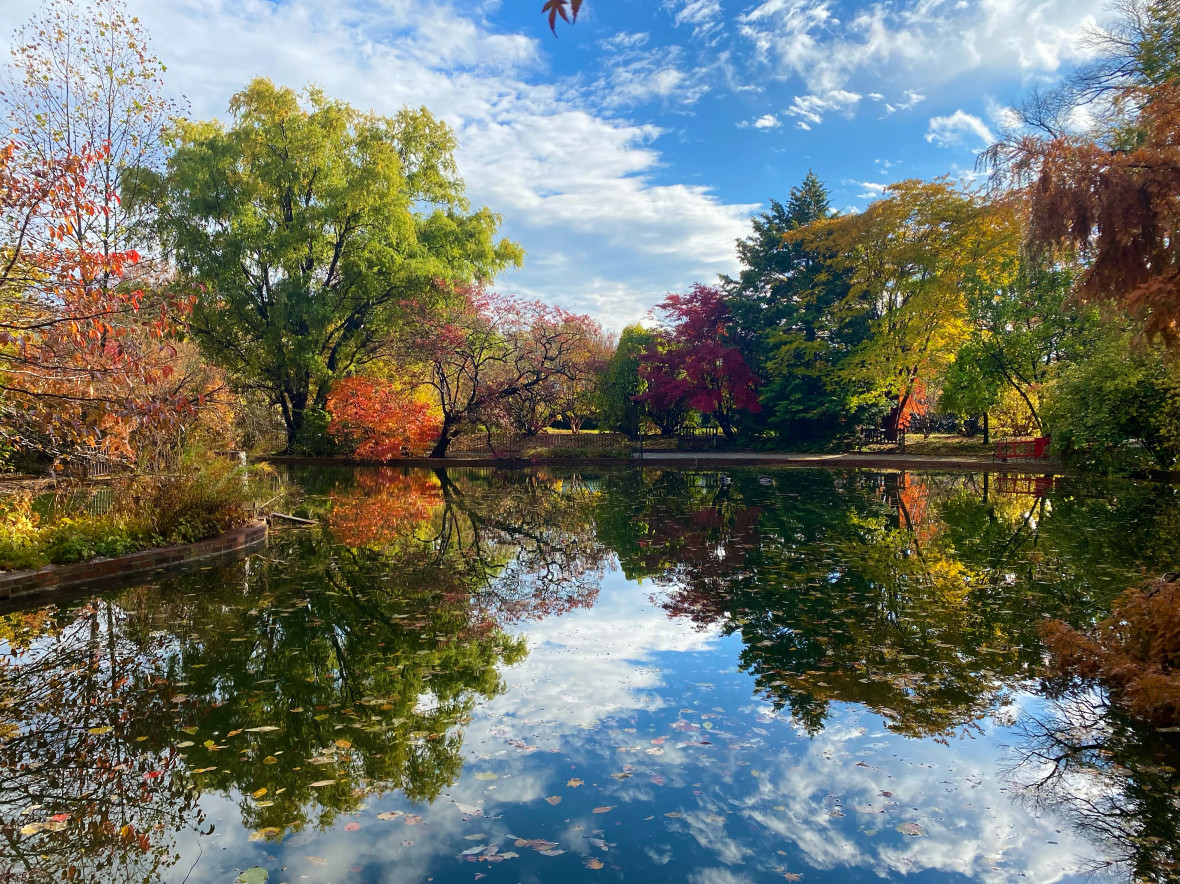
HISTORY
The Staten Island Botanical Garden is part of the Snug Harbor Cultural Center, a plot of land once used as housing for retired sailors in the mid-1800s. In the 1970s, the area, which had gone from dozens of buildings and a thousand residents in its late-19th-century heyday to rundown and largely empty in the post-World War II era, was purchased by the city, and the gardens were collected into a botanical garden, established in 1975.
WHAT’S THERE?

There are nine different gardens to explore at Snug Harbor. The New York Chinese Scholar’s Garden is one of just two Chinese-style outdoor gardens in the United States; designed to resemble the imperial gardens of the Ming Dynasty era, it features a bamboo forest path, a koi pond, rock sculptures, and eight pavilions, with paths that zigzag through it. Also noteworthy is the Connie Gretz Secret Garden, an enclosed half-acre plot with a shrubbery maze and three masonry towers. And the White Garden draws its inspiration from Sissinghurst, the famous English garden of Vita Sackville-West; all its plants have either gray-green foliage or white blossoms, including roses, lilies and irises.
Find our full guide to Snug Harbor here
Visitors will also find a rose garden, a perennial garden, an allée made up of arched hornbeam trees, an Italian Renaissance-style Tuscan garden, and the Healing Garden, which is full of woodland plants and trees. In addition to the gardens, there is a wetlands area that is popular with local birdwatchers and a 2.5-acre farm that grows produce for Staten Island and New York City.
WHEN TO GO

Snug Harbor is open year-round and seven days a week from dawn to dusk. The Chinese Scholar’s Garden is closed on Mondays and Tuesdays and requires admission, which is $5 for adults, $4 for seniors and students, and free for children under 5. Spring and summer are the best times to visit, as there is no conservatory or other indoor greenhouse.
HOW TO GET THERE

Take the subway to lower Manhattan — the 1 train to South Ferry, the 4/5 to Bowling Green or the R to Whitehall — and board the Staten Island Ferry. When you arrive at the St. George Terminal, you can take the S40 bus from Gate D to Snug Harbor, a ride of roughly 10 minutes.
Subway
Take any of the 1, 4, 5 or R trains to lower Manhattan and board the Staten Island Ferry to reach Snug Harbor
WAVE HILL

HISTORY
Located in Riverdale in the Bronx and situated on a slope overlooking the Hudson River, Wave Hill was a farm in the 18th century. The locally powerful Morris family turned it into an estate in the 1840s, then sold it 20 years later to publisher William Henry Appleton, who added gardens and greenhouses. He also rented out Wave Hill as a summer residence for well-to-do New Yorkers in the Gilded Age, including Theodore Roosevelt and his family, as well as Mark Twain. Financier and conservationist George Perkins purchased Wave Hill at the turn of the century and did a significant amount of landscaping on the site, expanding and transforming its gardens. In 1960, his family deeded Wave Hill to the city, and it was opened to the public as a botanical garden in 1967.
WHAT’S THERE?

There are 28 acres of gardens and woodlands at Wave Hill, including old-growth forest, a conservatory, and a house dedicated to alpine plants and flowers. A pergola provides a covered space full of plantings to take in views of the New Jersey Palisades across the river. Visitors can explore manicured flower and herb gardens, plus a terrace of tropical plants. The expansive lawns provide a sunny space to lounge or picnic. Wave Hill is also a popular spot for birdwatchers thanks to a half-mile trail that winds through the woodland. Visitors can also tour the two mansions on the property: Wave Hill House, built by the Morris family in the early 1840s; and Glyndor House, built in the 1860s and now a gallery.
WHEN TO GO

Wave Hill is open year-round, Tuesday to Sunday, from 10 am to 5:30 pm. Admission is $10 for adults, $6 for seniors and students, $4 for children ages 4-12, and free for members; admission is also free to the general public on Thursdays. Walking tours of the gardens are provided free with admission on Sundays at 1 pm.
Find our full guide to Wave Hill here
Spring and summer are the best times to pay Wave Hill a visit, when you’ll find the greatest abundance of colors and blooms in the gardens, particularly around the pergola and in the seasonal beds of tulips and flowering annuals. But Wave Hill is a fine place to go in colder weather as well. The plants in the T.H. Everett Alpine House tend to bloom in early spring, and the conservatory provides a heated space to see tropical plants, cacti and succulents. Fall and winter are also a good time to explore the hillside Wild Garden, which is home to evergreen trees and plants like juniper, conifers, and red cedars. If you do visit in spring, don’t miss the glory-of-the-snow blooms along the woodland trail, transforming the slopes into bright blue carpets.
HOW TO GET THERE

Visitors can reach Wave Hill by either Metro-North or the subway. Take the Hudson line to the Riverdale station, then either board a free shuttle bus or walk 15 minutes to the garden. Or you can ride the 1 train to its final stop at 242nd St-Van Cortlandt Park, then take either the Bx7 or Bx10 bus to 252nd Street, which is the closest stop to Wave Hill. You can walk from the 1 train station, though it’s a trek of more than a mile, or take a free shuttle that runs hourly between Thursday and Sunday. If you’re coming from Manhattan, you can also take the BxM1 or BxM2 express buses from the east and west sides, respectively.
Save on your trip and get the MTA Deal to Wave Hill here
Subway
Hudson
Take the 1 train or Metro-North's Hudson line to the Bronx in order to visit Wave Hill



